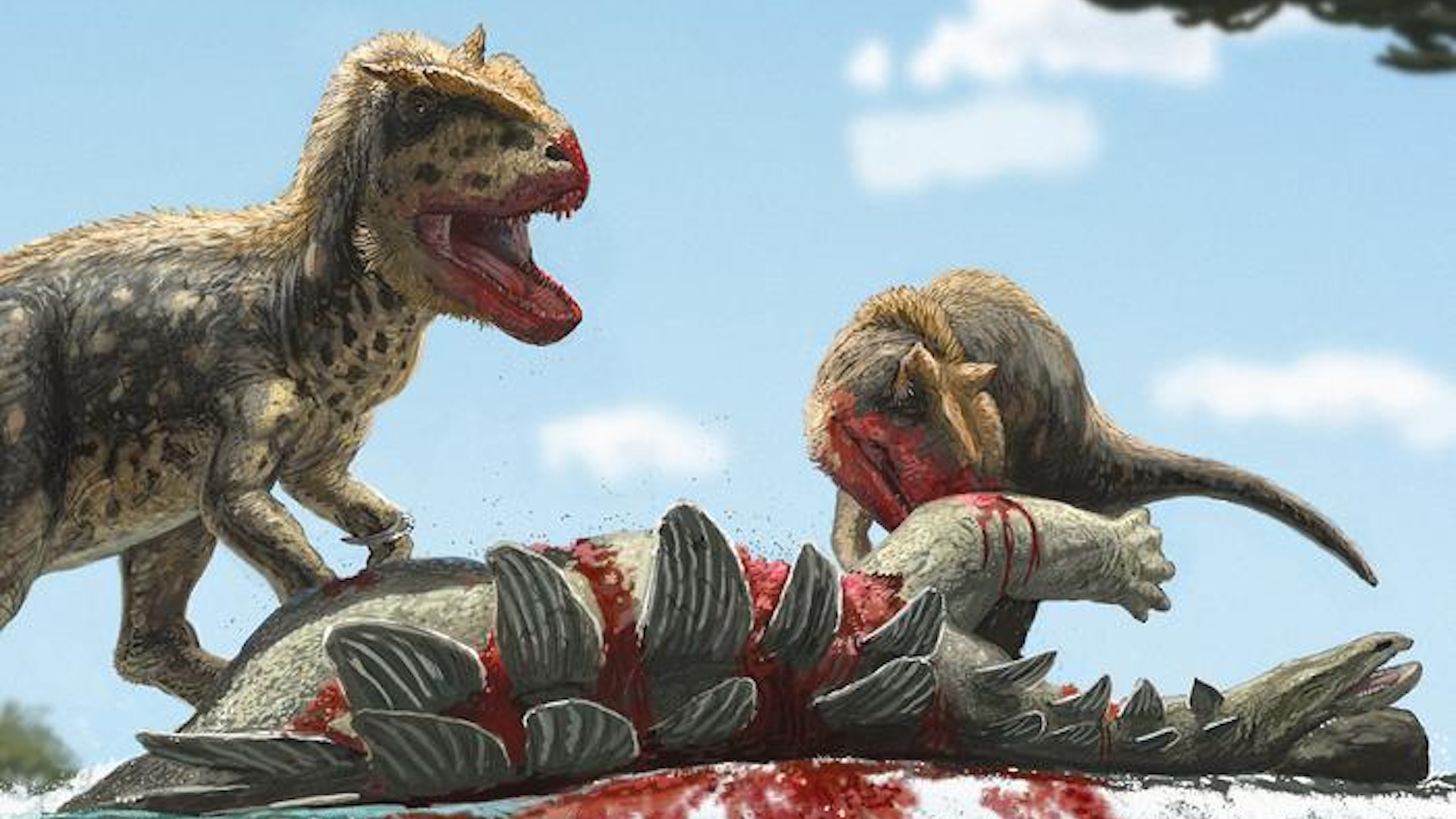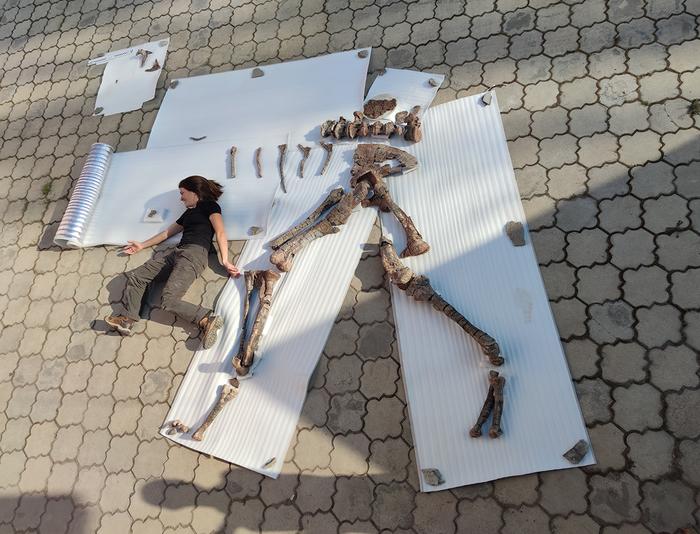T. rex relative with giant, protruding eyebrows discovered in Kyrgyzstan
The newly discovered Alpkarakush kyrgyzicus fossils are the first of their kind from Kyrgyzstan and provide evidence of predatory dinosaurs caring for offspring in the Jurassic.

Researchers have unveiled the first giant predatory dinosaur ever discovered in Kyrgyzstan — a distant cousin of Tyrannosaurus rex. The fossilized bones are from two individuals that could be a parent and its offspring.
The potential parent dinosaur was around 26 feet (8 meters) long and weighed more than 2,700 pounds (1,250 kilograms) despite not being fully grown, while the potential offspring was about 15% to 20% smaller.
The researchers named the dinosaur Alpkarakush kyrgyzicus, partly inspired by the giant mythological bird in the "Manas" epic poem of Kyrgyz culture called "Alpkarakush," the team wrote in a study, published Aug. 20 in the Zoological Journal of the Linnean Society.
A. kyrgyzicus belonged to a group of carnivorous dinosaur families collectively called the carnosaurs, which would later include T. rex's family and part of the larger theropod group that ultimately gave rise to living birds. Researchers found that the new carnosaur sat in a family called Metriacanthosauridae. These dinosaurs lived across Asia and Europe during the Jurassic period (201 million to 145 million years ago), but this is the first Jurassic theropod to be discovered in Central Asia west of China.
"Although the affiliation of Alpkarakush with the metriacanthosaurids is not necessarily a surprise, this discovery closes a huge gap in our knowledge of the Jurassic theropods," study lead author Oliver Rauhut, a curator at the Bavarian State Collection for Palaeontology and Geology in Germany, said in a statement. "It leads us to important new insights into the evolution and biogeography of these animals."
Related: T. rex could have been 70% bigger than fossils suggest, new study shows
Rauhut and his colleagues excavated the dinosaurs from a mountainous desert region near Tashkumyr in western Kyrgyzstan. They started finding exposed A. kyrgyzicus fossils in 2006, but the bones went deep into the slope of a steep incline, and it took several excavations between 2006 and 2023 to retrieve them all, according to the study.
Get the world’s most fascinating discoveries delivered straight to your inbox.

The larger specimen was more intact and included almost complete hind limbs as well as skull bones and vertebrae. These fossils revealed that A. kyrgyzicus had a variety of unique features, including a protruding orbital brow on the postorbital bone, which the statement described as a distinctive "eyebrow."
The researchers studied the bones' internal structures and features such as growth rings — like the ones found in trees — to determine how old the dinosaurs were when they died. They concluded that the fossils likely belonged to a subadult that was at least 17 years old and a considerably younger juvenile — which they said could have been its offspring, given the close proximity of the two dinosaurs.
"This association suggests that juveniles of Alpkarakush travelled together with adults to at least an early subadult stage," the authors wrote in the study.
Scientists still have a lot to learn about Jurassic theropods in Central Asia. The study authors are encouraging other researchers to examine the A. kyrgyzicus fossils by sharing 3D models of all of the bones.
"These models are now available online and allow researchers worldwide to carry out follow-up studies and make 3D prints," study co-author Oliver Wings, the director of the Bamberg Natural History Museum in Germany, said in the statement.

Patrick Pester is the trending news writer at Live Science. His work has appeared on other science websites, such as BBC Science Focus and Scientific American. Patrick retrained as a journalist after spending his early career working in zoos and wildlife conservation. He was awarded the Master's Excellence Scholarship to study at Cardiff University where he completed a master's degree in international journalism. He also has a second master's degree in biodiversity, evolution and conservation in action from Middlesex University London. When he isn't writing news, Patrick investigates the sale of human remains.


